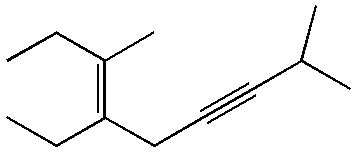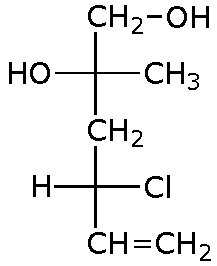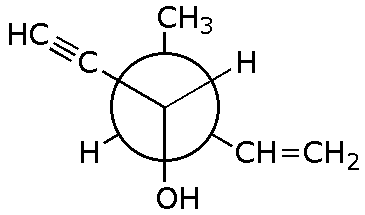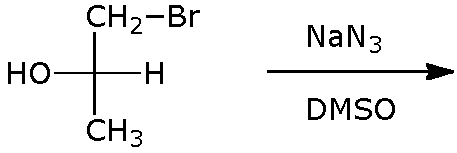Organic Chemistry I |
Exam 3 |
Professor Carl C. Wamser |
![]()
Organic Chemistry I |
Exam 3 |
Professor Carl C. Wamser |
![]()
1. (20 points) Write complete names for each of the following.
a) 
b) 
c) 
d) 
2. (15 points) Write accurate structures for each of the following:
a) meso-3,4-hexanediol
b) sodium propynide
c) a geminal dihalide of formula C3H6Cl2
d) the E2 transition state for reaction of bromocyclohexane with KOH
e) (R,R)-1,3-dichlorocyclohexane
3. (10 points) Complete each of the following structures by adding the missing parts to the structure on the right so that it is identical to the structure on the left:
a) 
b) 
c) 
d) 
e) 
4. (15 points) Complete each of the following reactions by adding the missing part:
either the starting compound, the necessary reagents and conditions, or the final major product.
Show stereochemistry if it is specific.
a) 
b) 
c) 
d) ![]()
e) 
5. (15 points) Write complete mechanisms, including all steps and showing electron-pushing arrows, for each of the possible reactions of cis-1-bromo-2-methylcyclopentane in methanol solution. Show the pathway to the expected major product from each mechanism.
a) SN1
b) E1
c) SN2
6. (10 points) Show a sequence of reactions that could be used to synthesize 2,2-dichlorobutane, starting with acetylene and methyl iodide as the only source of carbon in your final product. Just show the necessary reagents and conditions and products for each separate reaction. Mechanisms are not required.
7. (15 points) Synthesis of 2,3-dibromobutane from 2-butyne could be accomplished by at least three possible reaction sequences, as described below.
Carefully trace the stereochemistry in each of these three sequences and show the products expected in each case. Indicate R and S designations at every stereocenter.
a) hydrogenation with Lindlar’s catalyst, followed by addition of Br2
b) reduction with sodium in liquid ammonia, followed by addition of Br2
c) addition of one equivalent of Br2, followed by catalytic hydrogenation
![]()